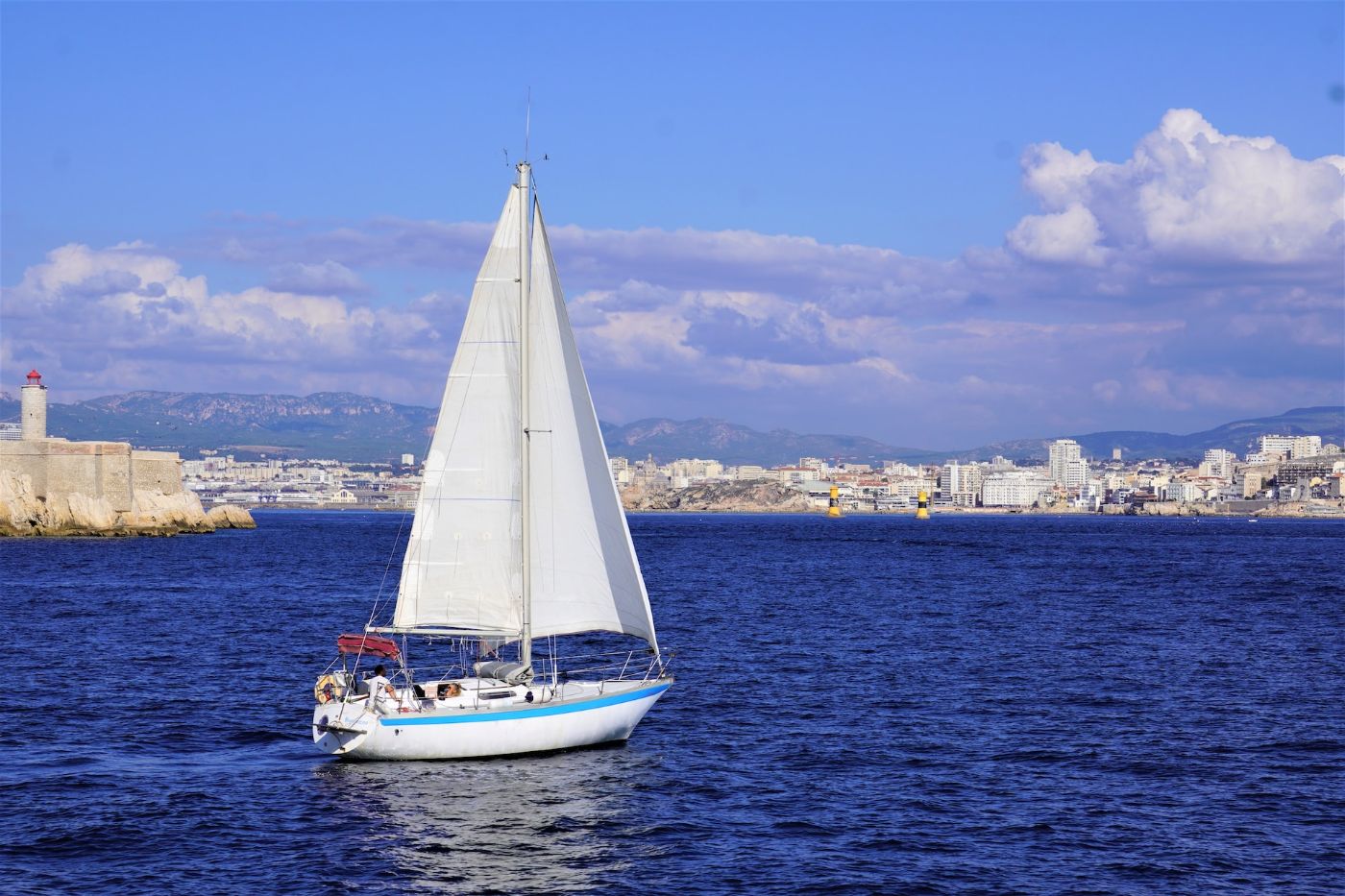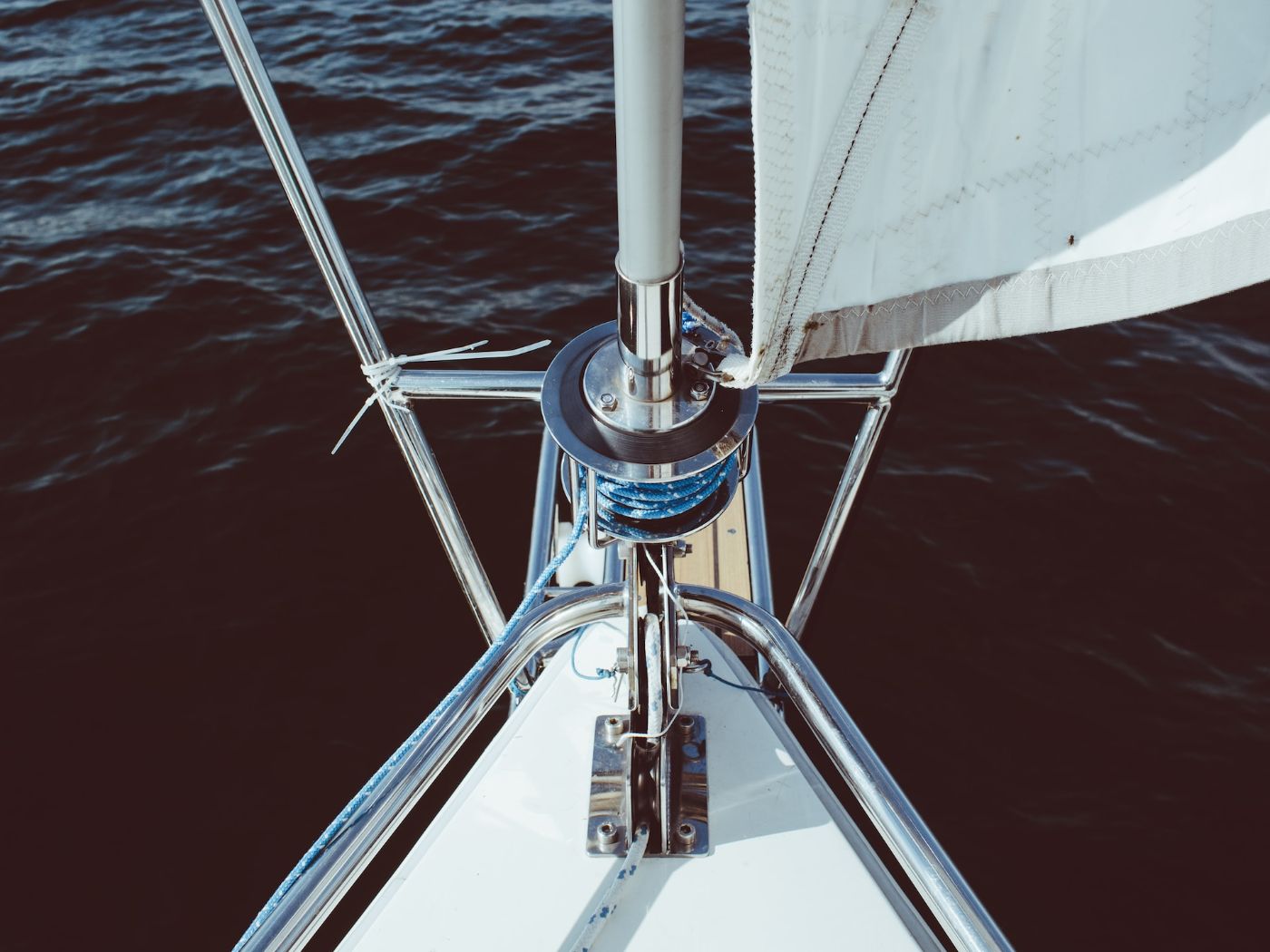Close Haul vs Close Reach: 3 Key Differences
"Close haul" and "close reach" are two terms you need to know when learning about sailboat maneuvering. While they may sound technical and intimidating, they can greatly improve your sailing skills and help you navigate the waters with ease. Here are three key differences between close haul and close reach, and how they affect your sailboat's performance.
Close haul requires the boat to sail close to the wind, while close reach allows the boat to sail at a comfortable angle. Close haul requires precise sail trim and steering, while close reach is more forgiving and allows for more room for error. A close reach is also a faster point of sail than a close haul.
Close haul and close reach require different types of sails to maximize your speed and efficiency. Let's find out which type of sail is best for these two.
Summary
- The most suitable sail type for close reaching is a jib, while a spinnaker can help catch more wind.
- Close haul is the point of sail where the boat is sailing at an angle of 30 to 45 degrees.
- Close reach is the point of sail where the boat is sailing at an angle of 60 to 75 degrees.
- The sails need to be trimmed tight when sailing close-hauled, but for close reaching, the sails can be eased out slightly.
- In close reach, the wind is coming over the side of the boat, creating a lift and pushing the boat forward at a faster rate.

On this page:
Three Key Differences Between Close Reach and Close Haul
| Key Difference | Close Haul | Close Reach |
|---|---|---|
| Angle to the wind | Sailing as close to the wind as possible, heading upwind at an angle of about 30-45 degrees to the wind | Wind coming over the side of the boat at an angle of about 60-75 degrees |
| Wind direction | Wind is coming from the side of the boat | Wind is coming from slightly behind the boat |
| Boat speed | Generally slower than close reaching due to less sail area exposed to the wind | Can achieve higher speeds due to more sail area exposed to the wind |
They differ in terms of their angle to the wind
Close-hauled is the point of sail where the boat is sailing as close to the wind as possible. This means that the boat is heading upwind at an angle of about 30-45 degrees to the wind.
On the other hand, close reach is the point of sail where the wind is coming over the side of the boat at an angle of about 60-75 degrees.
When sailing close-hauled, the boat will have to tack back and forth to make progress upwind. This is because the boat cannot sail directly into the wind. When sailing a close reach, the boat can make steady progress upwind without having to tack as much.
When sailing close-hauled, the sails need to be trimmed in tightly to catch as much wind as possible. When sailing on close reach, the sails need to be eased out slightly to let the wind flow over them more efficiently.

They differ in terms of wind direction and sail trim
The key difference in wind direction between close haul and close reach is that in close haul, the wind is coming from the side of the boat, while in close reach, the wind is coming from behind the boat. This difference in wind direction affects the way the sails are trimmed and the way the boat is pointed toward the destination.
Since in close reach, the wind is coming from the side of the boat, the sails are therefore eased out slightly to allow the wind to flow over them more smoothly. This makes it easier to maintain speed and direction.
Meanwhile, in close-hauled, the sails are trimmed in tight so that they are nearly parallel to the wind. This is because the wind is coming from the front of the boat, so the sails are angled to catch as much of the wind as possible while still allowing the boat to move forward.
They vary in how they affect boat speed
Close hauling is generally slower than close reaching because the boat is sailing closer to the wind and has less sail area exposed to the wind. This means that the boat is not able to generate as much speed as it would when close reaching.
However, close hauling can be faster than close reaching in certain conditions. For example, if the wind is very strong and the waves are big, close hauling may be faster because the boat is able to cut through the waves more easily.
When close reaching, the boat can achieve higher speeds because it is sailing at a more favorable angle to the wind and has more sail area exposed to the wind. This means that the boat is able to generate more speed and power.
In general, the faster the boat is moving, the more difficult it is to maintain control. This is especially true when close reaching, as the boat is moving faster and the sails are exposed to more wind. You might need to be aware of your boat's speed to adjust your sails and steering accordingly.
Remember, boat speed is not the only factor to consider when sailing. Other factors, such as wind direction, sea state, and current, can also affect your boat's performance.
Tactics for Sailing Close Haul and Close Reach

The following are tips on how to sail more efficiently during either close haul or close reach:
Tips when sailing in close-hauled
-
Keep your weight forward
Keep your weight forward in the boat as this helps to keep the bow down and reduce drag. This can also help you sail closer to the wind.
-
Watch your telltale
Telltales are small pieces of yarn or ribbon attached to the sails that help you determine the direction and strength of the wind. When sailing close-hauled, try to keep a close eye on your telltales to ensure that your sails are properly trimmed.
-
Adjust your sails for gusts
You may encounter gusts of wind that can cause your boat to heel over or slow down during your sail. To maintain speed and control, you might need to prepare in adjusting your sails as needed to compensate for these gusts.
-
Use your body weight to steer
You may use your body weight to help steer the boat. By shifting your weight slightly to one side or the other, you can help the boat turn into the wind or away from it.
-
Keep a close eye on other boats
When sailing close-hauled, you may be sailing in close proximity to other boats. Keep a close eye on these boats and adjust your course as needed to avoid collisions.
-
Practice more to master sailing in close-hauled
Sailing close-hauled can be challenging, especially for beginners. The more you practice, the more comfortable you will become with the technique, and the better you will be able to sail close to the wind.
-
Keep your sails tightly pulled and flattened to generate lift
When sailing close-hauled, you may want to ensure that your sails are pulled in nice and tight. This is as close to the wind as you can go, and you'll need to keep a close eye on your sail trim.
Your sails should be trimmed in as far as they will go and flattened to generate as much lift as possible. The closer you are to the wind (or the "no-go zone"), the more to "point" your sailboat will be.
Tips when sailing in close reach

To sail close reach, you'll need to let your sails out a bit. Not quite as tricky as close hauled, but you'll still need to keep a close eye on your sail trim. Your sails should be trimmed so that they are just outside of the "no-go zone."
Here are some tips to consider when sailing on close reach:
-
Keep the boat balanced
Perhaps make sure that the boat is balanced and evenly trimmed. Keep your weight centered and make sure your crew is evenly distributed throughout the boat. This will help you maintain control and prevent the boat from heeling too much.
-
Adjust the sails
Trim the sails so they are just slightly luffing. This will help maintain speed and prevent the boat from stalling.
-
Keep an eye on the wind
Watch for changes in wind direction and speed. Adjust the sails and steering as necessary to maintain the optimal angle to the wind.
-
Use the telltale
Keep an eye on the telltales on the sails. They will give you a good indication of how the wind is flowing over the sails and help you adjust the angle of the sails.
-
Keep a lookout
Always keep a lookout for other boats and hazards in the water. Sailing close to other boats can be dangerous, so make sure to give them plenty of space.
-
Take time to practice
The more you sail close reach, the better you will become at it. Take the time to practice and refine your technique, and soon you'll be sailing like a pro!
Tips when tacking or gybing
When tacking or gybing, try to keep your boat speed up. This will help you maintain momentum and make the turn more smoothly. Make sure your crew is ready to help with the maneuver and communicate clearly with them throughout the process.
Tips when steering
When steering, keep an eye on your boat's speed and direction. Use your rudder to make small adjustments as needed, and try to anticipate changes in the wind or waves.
For more actionable tips on how to sail more efficiently in different wind directions, here's an article for you.
Different Sail Types for Close Haul and Close Reach

Close haul and close reach are two points of sail that require different types of sails to maximize your speed and efficiency.
The right type of sail for close hauling
To achieve maximum speed and efficiency when sailing in close-haul, you will need a sail that can generate a lot of lift. This is typically done with a high aspect ratio sail, which is tall and narrow.
The most common type of sail used for close haul is the jib, which is a triangular sail that is attached to the forestay at the bow of the boat. Jibs come in a variety of sizes and shapes, with the most common being the genoa. This large, overlapping jib provides a lot of power and lift, making it ideal for close-haul sailing.
The right type of sail for close reaching
The most common type of sail used for close reach is the spinnaker. This large, colorful sail is designed to catch as much wind as possible and provide maximum speed. Spinnakers are typically used in light wind conditions, and they require a lot of skill to use effectively.
Another option for close-reach sailing is the asymmetrical spinnaker. This sail is similar to the traditional spinnaker, but it is shaped more like a jib and is easier to handle. Asymmetrical spinnakers are becoming more popular in racing circles due to their ease of use and versatility.
Did you find the answer to your specific question?
👍 0 👎 0



Leave a comment